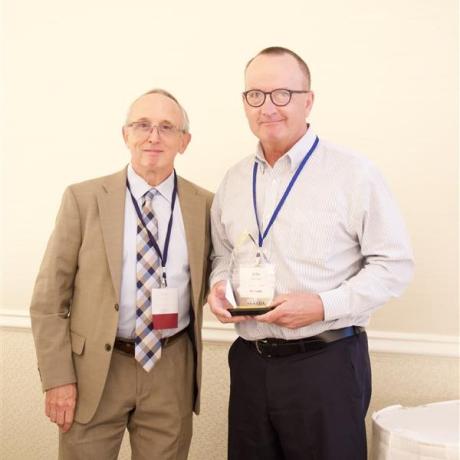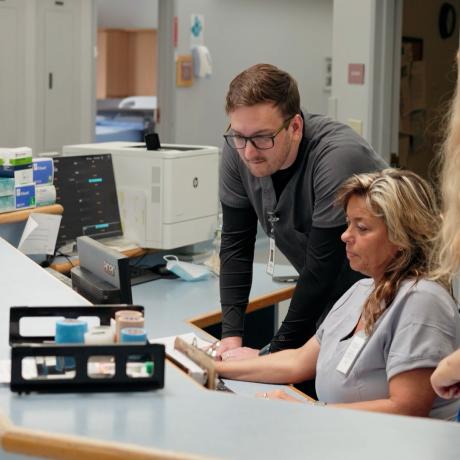Sally Buck, CEO
10/16/2025
We at the National Rural Health Resource Center know that rural health care is vital for millions of people. Providers deliver essential care and contribute to the strength of the local economy and rural citizens find comfort in knowing necessary or needed care is never far away. Rural hospitals and clinics are a source of comfort and pride, and they serve as a source of health information and leadership to communities. This care, delivered locally to communities across the country, saves and improves lives.
To meet local need, rural providers work hard to keep up with change, adding new services, improving quality, exploring new payment models, and using technology to reach more people. Still, the growing challenges they face make these changes harder than they should be.
These challenges begin with financial stability. Higher costs and lower margins are compounded by a shrinking workforce, patient bypass, and changes in insurance coverage. While many providers have adopted solutions such as value-based care, most continue to operate within a fee for service model, requiring bridge funding and technical assistance to move toward alternative payment models. That funding may or may not be readily available to support many of the changes rural health providers need to make.
Too often, the very hospitals and clinics that serve as anchors in their communities are now struggling to survive. Without essential support, many are forced to reduce services, and some face the possibility of closing altogether. It is a reality that has affected many rural towns and continues to threaten more each year.
Recently, the Centers for Medicare and Medicaid Services established the Rural Health Transformation (RHT) Program, providing fifty billion dollars over five years to approved states beginning in 2026. These funds can support improvements to health care delivery in many of the areas crucially needed in rural communities: expanding services, improving quality, advancing payment models, and using technology to reach more patients, and with limits, through payments to providers and capital improvements. If approached with balance and care, these investments with policy changes can stabilize today’s providers while driving long term transformation in health care delivery.
Leaders should listen and include the voices of the most vital and vulnerable organizations in their rural communities.
Fifty billion dollars is no small amount. It’s an exciting opportunity and yet in the short window for states to write applications and identify solutions, critical needs can be overlooked. Focusing on short term items may bring temporary relief but may distract from the long-term goal of financial stability. The Center understands the impact an influx of funds for technical assistance can have on rural health care organizations. Our experiences show that successful technical assistance initiatives share six elements: building awareness, providing education, assessing financial and operational standing, implementation, evaluation, and peer sharing. Together, these build lasting capacity for sustainable change in health care delivery. States should consider these elements as they continue to develop their applications and move toward implementing their project in the future.
We encourage a holistic approach to improving rural health care. If it isn’t happening already, leaders should listen to and include the voices of the most vital and vulnerable organizations in their rural communities such as hospitals, clinics, businesses, schools, faith communities, and non-profits. They might consider improvements to outside factors such as payment models, insurance coverage, and advancements in technology. Exploring the possibility of forming local vertical and horizontal networks of unique organizations to support these efforts is a promising option. This is a moment for collaboration, a chance for states to take innovative steps together to solve complex challenges and ensure sustainable transformation that strengthens and keeps health care local.
Considering the current urgency rural health care faces, over the past few months the National Rural Health Resource Center has increasingly connected with communities and partners across the country to ask questions and identify solutions. State leaders preparing applications are encouraged to tap into the numerous resource centers supported by the Health Resources and Services Administration’s Federal Office of Rural Health Policy and CMS Innovation evaluations such as the Rural Health Research Gateway, the Flex Monitoring Team, RHIhub, Rural Health Value, and NORC.
Several organizations such as our own National Rural Health Resource Center can provide resources and information on national, regional, and state best practices acquired from FORHP technical assistance programs: TASC for the Rural Hospital Flexibility Grant Program, the Small Rural Hospital Improvement Program, the Delta Region Community Health System Development Program, the Rural Healthcare Provider Transition Project. The National Organization of State Offices of Rural Health and the National Rural Health Association are also available to provide needed information. These programs, as well as partners in philanthropy, are valuable resources for this collaborative opportunity.
The importance of rural health is known, the voices are heard, the challenges understood, and throughout all our conversations, one thing remains the same: there is passion. It’s encouraging to see so many people, community leaders, elected officials, health care providers, technical assistance centers, non-profits, networks, and associations alike, focused on improving care and keeping it local. This kind of collective effort gives real promise to the future of rural health care. Together, transformative and sustainable change is possible.





